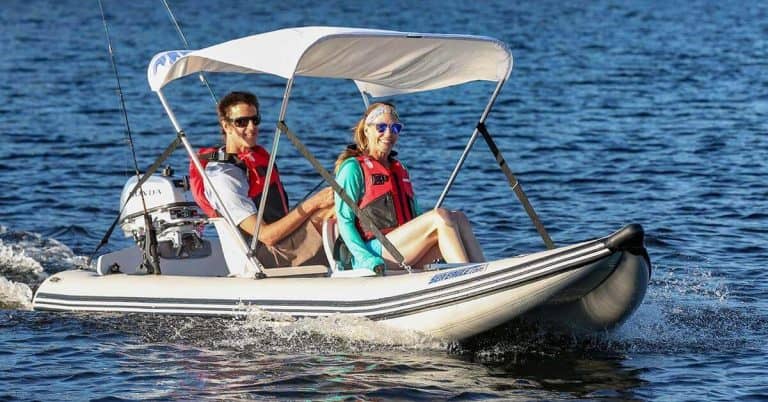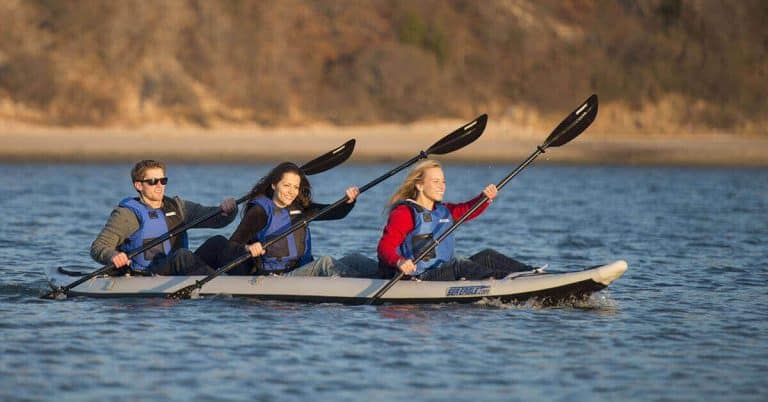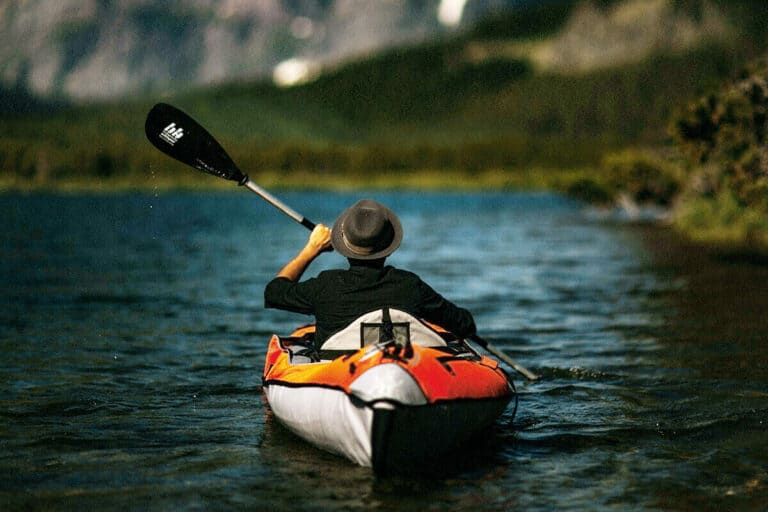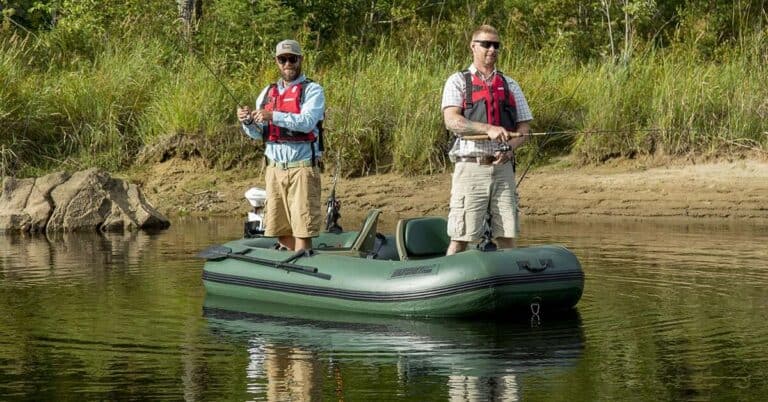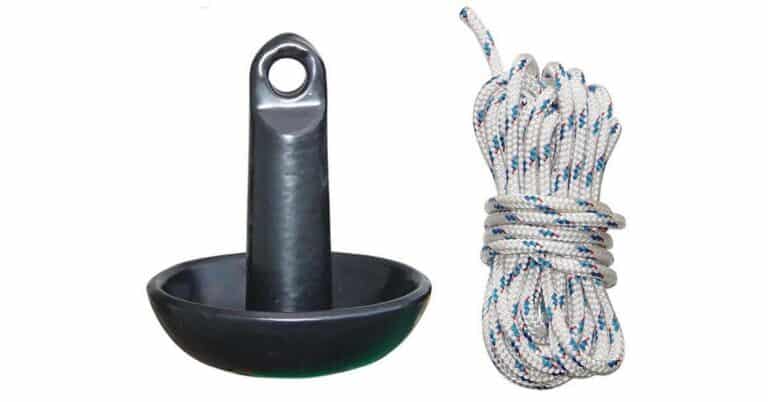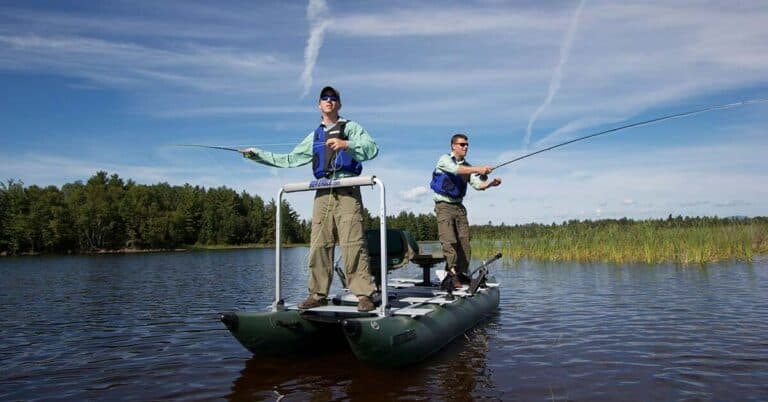Disclosure: I am compensated for purchases made through some links on this site. Click for details.
Wondering if fishing float tubes are safe? After all, these precarious-looking boats evolved out of tractor innertubes.
Innertubes are fun! As a kid, I would float along in streams in innertubes… flip over in innertubes… drag my butt over rocks when floating down the stream. As an adult who loves the outdoors and fishing, I had to know more about these boats. They look like a ton of fun!
So here’s the skinny on the safety of fishing float tubes…
The durability and superior design of today’s U-shaped and V-shaped float tubes offer a safe and fun fishing solution when reasonable precautions are met. Human error has more to do with fishing float tube safety than the boat itself.
Float Tube Design Affects Safety
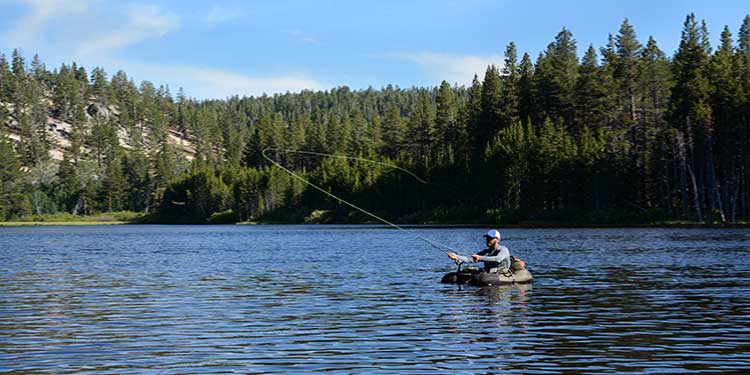
The Durability of Fishing Float Tubes
The durability of today’s float tubes far exceeds its predecessor the innertube though the quality of among manufacturers varies. Make sure to purchase a fishing float tube that’s made of durable materials. Durability is of tremendous concern when out on the water.
When choosing your boat, look for a float tube made of strong materials that are resistant to abrasion and tears and depending on its materials it should have sewn or welded seam construction.
Float tubes must be rugged to resist repetitive contact with sharp rocks and brush along with the wear and tear of getting the boat to your favorite fishing spot.
The fishing float tubes we cover later in the weight capacity section are all well made durable boats that you can use as an example of what to look for.
The Shape of Fishing Float Tubes
Fishing float tubes are well-performing personal boats specifically designed with fishermen in mind. Not the lazy river float they evolved from.
Fishing float tubes come in a variety of shapes and sizes:
- Round float tubes
- V-shaped float tubes
- U-shaped float tubes
V-shaped and U-shaped fishing float tubes are more stable than the traditional round float and are a safer option. They look like a crossover between a round float tube and the small, inflatable, U-shaped pontoons (frameless pontoons) that many fishermen love. A mini, frameless pontoon if you will.
Features of Fishing Float Tubes
The basic features of many fishing float tubes lend themselves to safety.
Raised seat: A raised seat provides better visibility, accuracy, and casting distance while fishing but the increased visibility also plays a factor in safety. The ability to see hazards and vulnerabilities greatly improves safety and reduces the chance of human error.
Backrest: The backrest not only improves comfort but reduces fatigue. Fatigue is often tied to human error.
Weight capacity: Fishing float tubes have a designed weight capacity. Your float should adequately carry your weight and the weight of your fishing gear. See the next section, Weight Capacity of Fishing Float Tubes, for a list of fishing float tubes and frameless pontoons, their larger cousin.
Armrest cargo and behind-the-seat storage: Cargo storage areas are indirectly related to safety. They will hold the safety gear and fishing gear you’ll need while out in the water.
Materials: As mentioned earlier, the materials used in manufacturing reflect the durability of the fishing float tube. Durability is directly tied to safety.
Weight Capacity of Fishing Float Tubes Impacts Safety
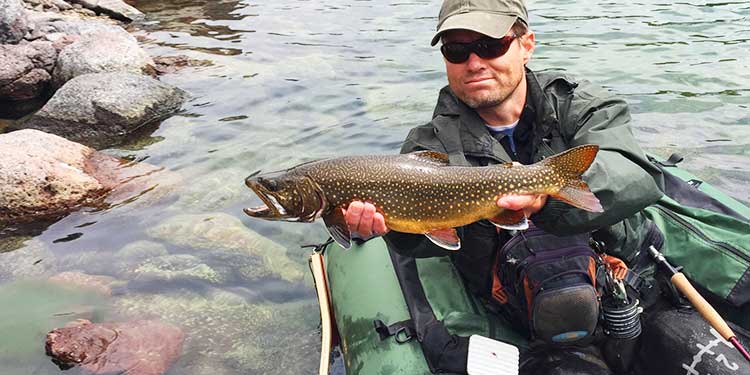
Your fishing float tube needs to be able to support your weight and the weight of your gear.
The materials and size of some float tubes yield a weight capacity as little as 175 lbs. This isn’t adequate for many men including me. A lot of guys in my family are over 6′ 4″ and pushing 300 lbs. Know any guys like that? Luckily, there are fishing float tubes to accommodate them.
Let’s look at the weight capacity of popular fishing float tubes and frameless pontoons, their larger cousin.
Which of these fishing floats would be able to handle your weight and that of your safety and fishing gear?
Caddis
| Model | Dimensions (inflated) | Max Load | Weight* |
| Pro 2000 | 53″ x 46″ | 325 lbs | 11 lbs |
| Premier Plus | 58″ x 44″ | 325 lbs | 15 lbs |
| Inspire LC | 59″ x 46″ | 330 lbs | 12 lbs |
| Platinum Elite | 62″ x 43.5″ | 350 lbs | 28 lbs |
| Platinum CC Ryder | 92″ x 48″ | 350 lbs | 44.5 lbs |
Classic Accessories
| Model | Dimensions (inflated) | Max Load | Weight* |
| Teton Float Tube | 42.5″ x 40″ | 250 lbs | 8.5 lbs |
| Bighorn Float Tube | 54″ x 50″ | 300 lbs | 11 lbs |
Outcast
| Model | Dimensions (inflated) | Max Load | Weight* |
| Fish Cat Rise | 43″ x 43″ | 250 lbs | 8 lbs |
| Fish Cat 4-LCS | 55″ x 44″ | 250 lbs | 16 lbs |
| Fish Cat 4 Deluxe – LCS | 55″ x 44″ | 250 lbs | 15 lbs |
| Fat Cat – LCS | 64″ x 45″ | 300 lbs | 14 lbs |
| Super Fat Cat LCS | 64″ x 45″ | 300 lbs | 13 lbs |
| Fish Cat 5 Max | 64″ x 47″ | 300 lbs | 15.5 lbs |
| Prowler | 64″ x 50″ | 325 lbs | 19 lbs |
| Fish Cat Scout | 84″ x 55″ | 400 lbs | 35 lbs |
| Stealth Pro | 96″ x 57″ | 450 lbs | 35 lbs |
White River Fly Shop – Bass Pro Shops
| Model | Dimensions (inflated) | Max Load | Weight* |
| Lost Lake Round | 50″ x 50″ | 175 lbs | ? |
| Lost Lake | 46″ x 42″ | 225 lbs | ? |
* Manufacturer claimed kayak weight may exclude features like the seat and pedal drive.
Fishing Spots and Water Safety
The body of water on which you fish has a great impact on your personal safety.
Fishing spots with fast-moving water, dangerous currents, natural waves, and waves from the wake of motorized boats make for dangerous situations.
Small lakes, ponds, and very slow-moving creeks make for ideal fishing spots for fishing float tubes. If you’re on a large body of water, stay closer to shore and in coves away from motorized boats. Being out in open water introduces many dangers.
The body of water and the day’s weather often dictates which personal watercraft works best. Certain boats are better than others. One day it may be a fishing float tube or it may be a sit-in or sit-on-top fishing kayak.
Weather Safety Issues
Fishing float tubes expose you to weather conditions and water temperatures that you need to keep an eye on before going out on the water and while on the water.
Getting caught out on the water in a fishing float tube in bad conditions is dangerous.
Rain, heat, snow, wind… Float tubes leave you exposed to the elements.
When the temperatures of the air or water are cold, you’ll be cold if you aren’t wearing a dry suit.
Wind can push you around and drag you into dangerous situations.
Heat can get rough as well. Remain hydrated and when possible use the water around you to cool off.
Float Tube Skill Levels Impact Safety
It takes time to become proficient at using a fishing float tube. As in the use of all paddle boats, practice improves your knowledge and skill levels. These go hand-in-hand in improving your safety on the water.
Is mastering a fishing float tube hard? No, not in the least. It just takes a little time to get used to your new watercraft.
Safety in Numbers
It’s always a good idea to have a buddy or buddies with you. Safety in numbers is a common theme in all outdoor activities. You can look after each other and for potential danger.
Fishing Float Tube Accessories for Safety
There are many safety accessories that you should take with you in your fishing float tube. The most important safety accessory is your personal flotation device (PDF).
Here’s a quick rundown of the items to consider taking with you.
- Personal flotation device (PFD)
- Safety whistle
- Navigational light (in case you’re out after dusk)
- Headlamp with extra batteries
- First-aid-kit
- Dry bag with water, food, sunscreen, lip balm, first aid kit, personal items, etc.
- Spare paddle
- Paddle leash
- Paddle float
- Paddling gloves
- Pump
- Float tube anchor
- Throw bag and/or throwable flotation device
- Towline
- Phone in a waterproof case
- Two-way radios to communicate with others in your group
- Weather radio
- Compass that floats
- GPS
- Emergency flares or strobe
- River knife
- Multi-tool
- Drysuit
- Polarized sunglasses like the ones I wear from Bajio with eyewear retainer if you don’t want to lose them
- Hat for blocking the sun
- Brightly colored clothing to make sure you’re clearly visible to other boaters
- Water shoes or neoprene footwear
- Insect repellent
- Float tube repair kit
Dangerous Fishing Float Tube Accessories
Many necessary fishing float accessories for fishing and safety can impose a danger. Sharp objects like fishing hooks, knives, and multi-tools should be stored in a container rather than loosely placed in the cargo storage areas of your fishing float tube.
Conclusion
Is A Fishing Float Tube The Right Boat For You?
Fishing float tubes can be a fun, safe, personal watercraft. With a little knowledge, preparedness, and the development of skills, you’ll love the advantage that float tubes provide.
The best place to start when buying a fishing float tube is to pick a boat with an appropriate load capacity for you and your float tube accessories. After that, focus on design, product quality, and these float tube fishing tips.
If fishing float tubes don’t quite meet all of your needs, an inflatable kayak might. They are larger, have a higher maximum load capacity, can seat more than one person, and accommodate a greater variety of waters.


